In this Mount Rainier National Park guide we will know that this stunning mountain is located in Washington State, known for its majestic volcano, glaciers, waterfalls, and diverse ecosystems.
It may not be the largest, most diverse, or even the most ostentatious, but to many, there’s something special about this place. Just as a composer can see greatness in a musical piece that is often missed by others, Mount Rainier is that composition to any connoisseur of the national parks.
It’s simple yet hard to describe; everything just seems to be in the right place. Even though the mountain has every right to demand attention as a soloist, it humbly defers its glory to the rest of the musicians, playing in perfect harmony with its surrounding orchestra.
Table of Contents
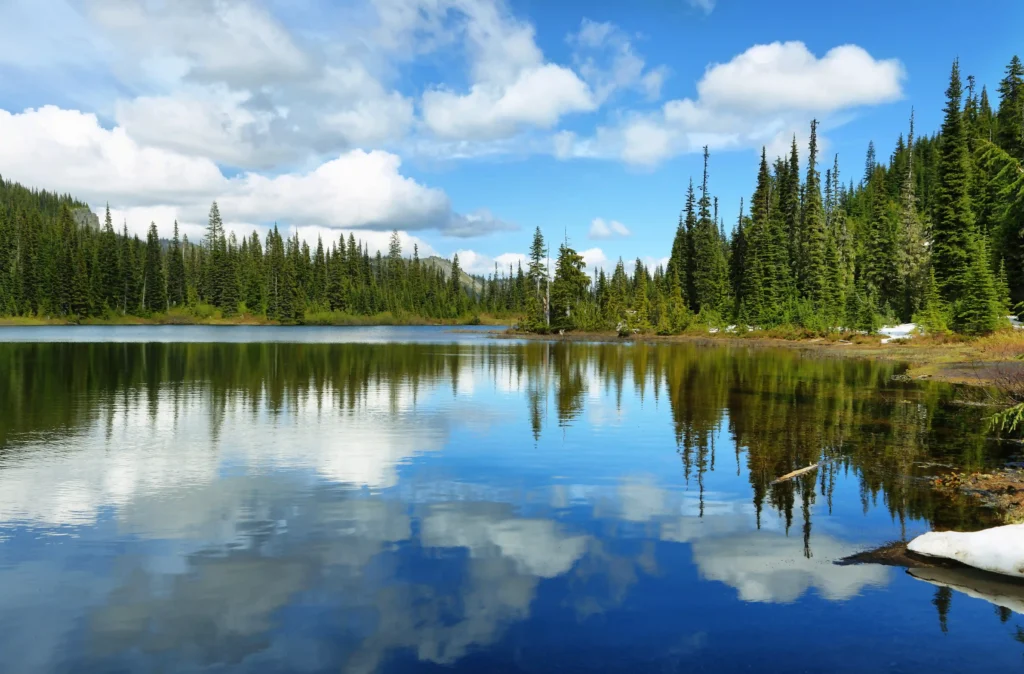
Mount Rainier National Park is a nature lover’s paradise, offering a breathtaking combination of towering mountains, lush forests, and vibrant wildflowers. Whether you’re a seasoned hiker or a casual nature enthusiast, this guide will help you make the most of your visit to one of America’s most stunning national parks.
Mount Rainier National Park History
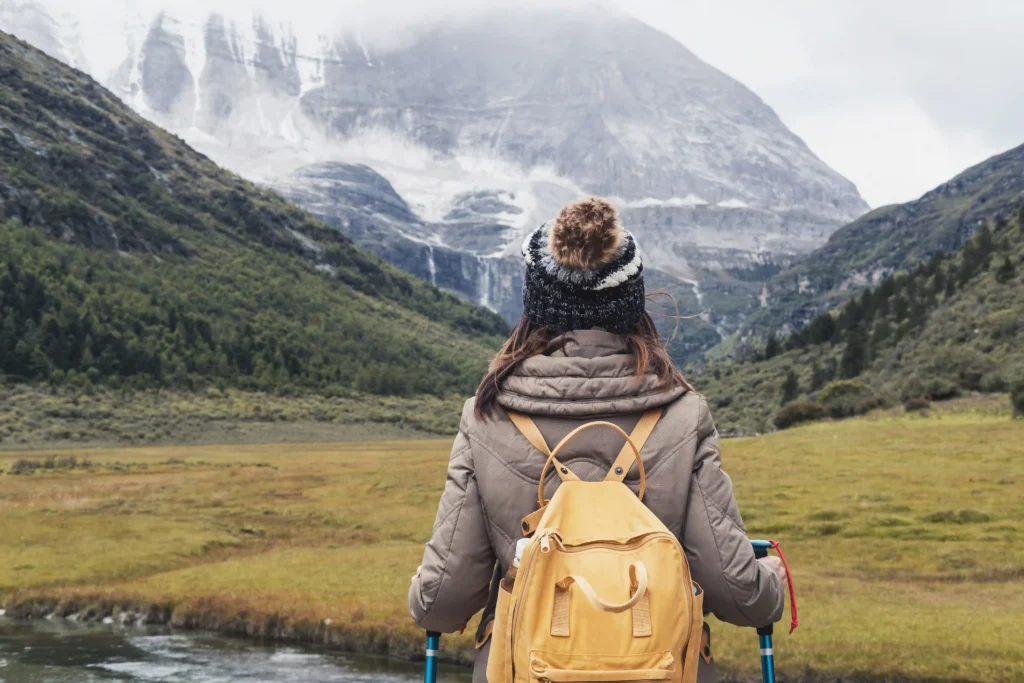
Mount Rainier National Park, established in 1899, is one of the oldest national parks in the U.S. The park spans over 236,000 acres and is home to Mount Rainier, an active stratovolcano standing at 14,411 feet. This majestic peak is the tallest in the Cascade Range and is often cloaked in a veil of mist and clouds, giving it an ethereal appearance.
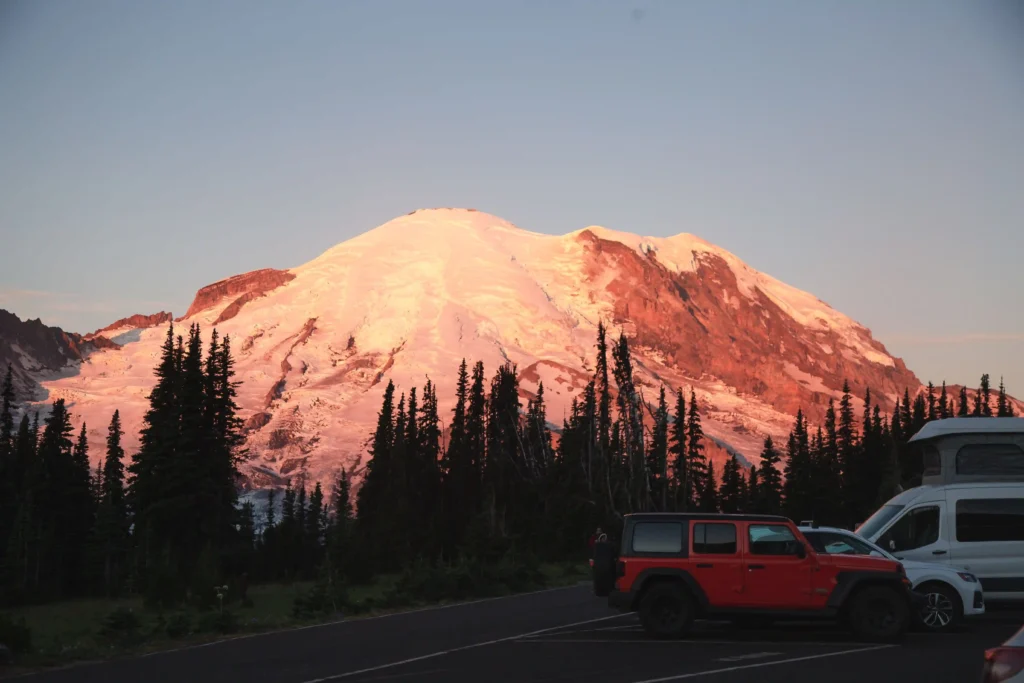
The park boasts a diverse range of ecosystems, from lush temperate rainforests to alpine meadows adorned with wildflowers. Visitors can marvel at glaciers, waterfalls, and old-growth forests, providing a stunning backdrop for outdoor adventures year-round.
What to see in Mount Rainier National Park?
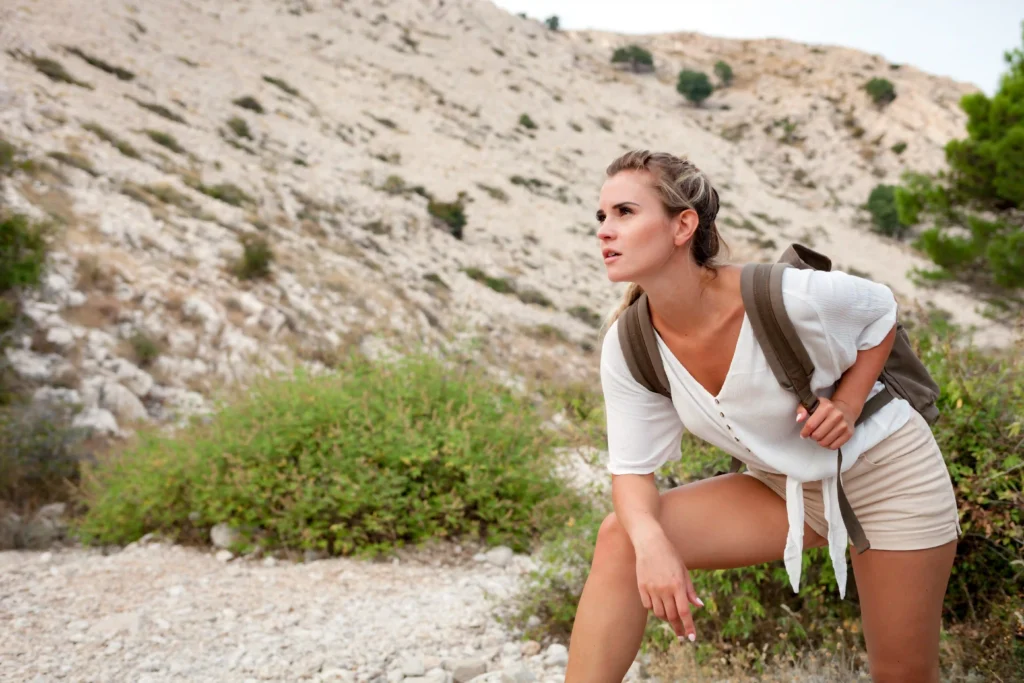
- Mount Rainier: A dormant volcano that is the most prominent peak in the Cascade Range.
- Glaciers: The park is home to numerous glaciers, including the Nisqually Glacier and the Carbon Glacier.
- Waterfalls: There are many beautiful waterfalls in the park, such as Paradise Falls and Myrtle Falls.
- Wildlife: The park is home to a variety of wildlife, including black bears, deer, elk, and mountain goats.
Things to do in Mount Rainier National Park:
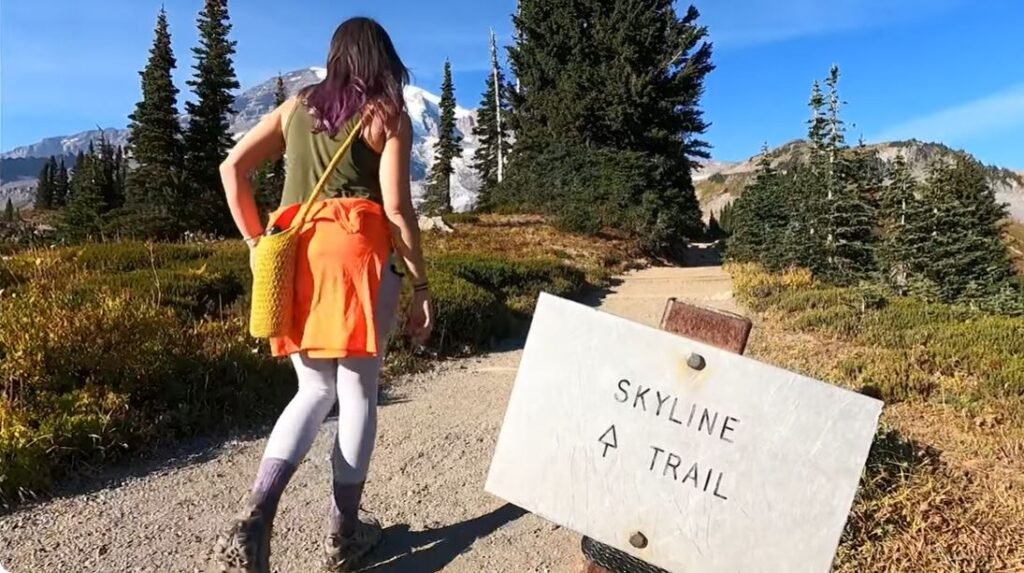
- Hiking: There are many hiking trails in the park, ranging from easy to challenging. Some popular hikes include the Paradise Loop Trail and the Myrtle Falls Trail.
- Scenic Drives: The park offers several scenic drives, including the Park Loop Road and the Wonderland Trail.
- Camping: There are several campgrounds in the park, offering tent and RV sites.
- Wildlife Viewing: Keep your eyes peeled for wildlife while hiking or driving through the park.
Best Hikes in Mount Rainier National Park Guide
Mount Rainier National Park offers a wide variety of hiking trails, ranging from easy to challenging. Here are a few popular options:
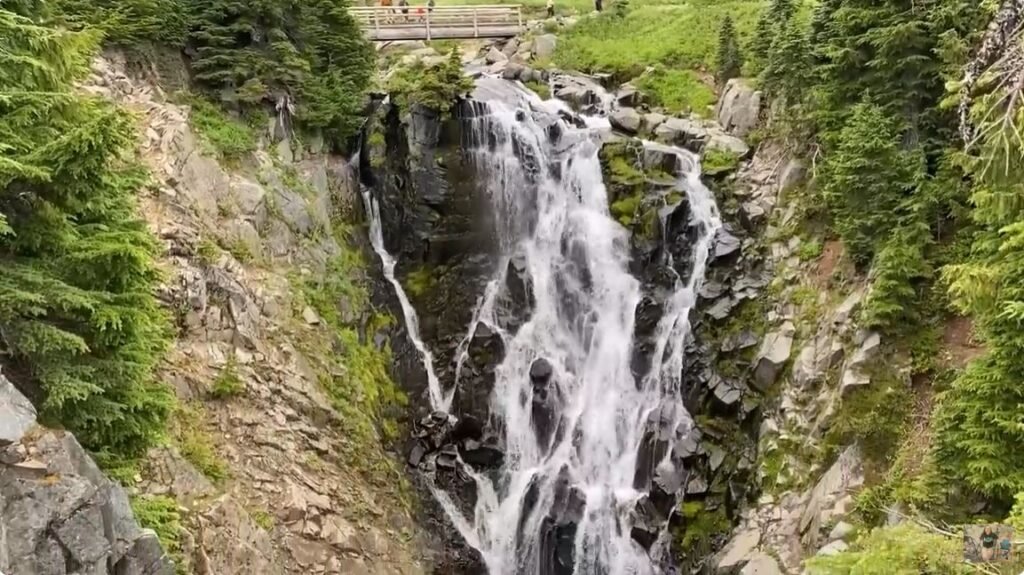
- Paradise Loop Trail: A moderate-level hike that offers stunning views of Mount Rainier and the Paradise Valley.
- Myrtle Falls Trail: A short, easy hike that leads to the beautiful Myrtle Falls.
- Christine Falls Trail: A moderate-level hike that leads to Christine Falls, a lesser-known waterfall with stunning views.
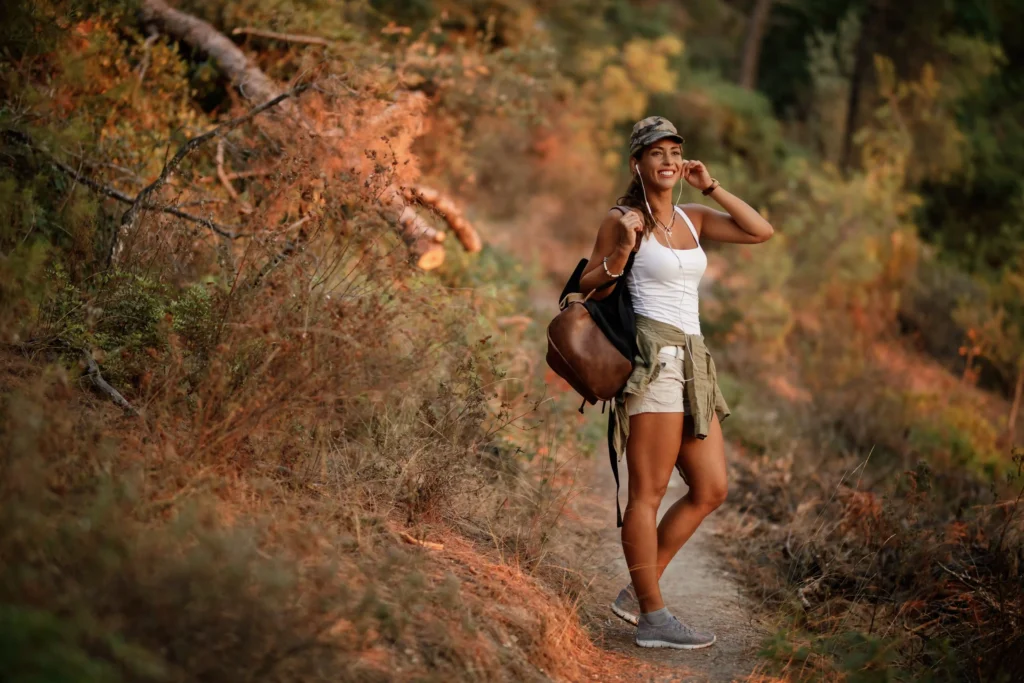
- Tahoma Park Loop Trail: A longer, more challenging hike that offers views of Mount Rainier and the surrounding landscape.
- Wonderland Trail: A 93-mile (149-kilometer) loop trail that circles the entire park.
Mount Rainier National Park Campgrounds
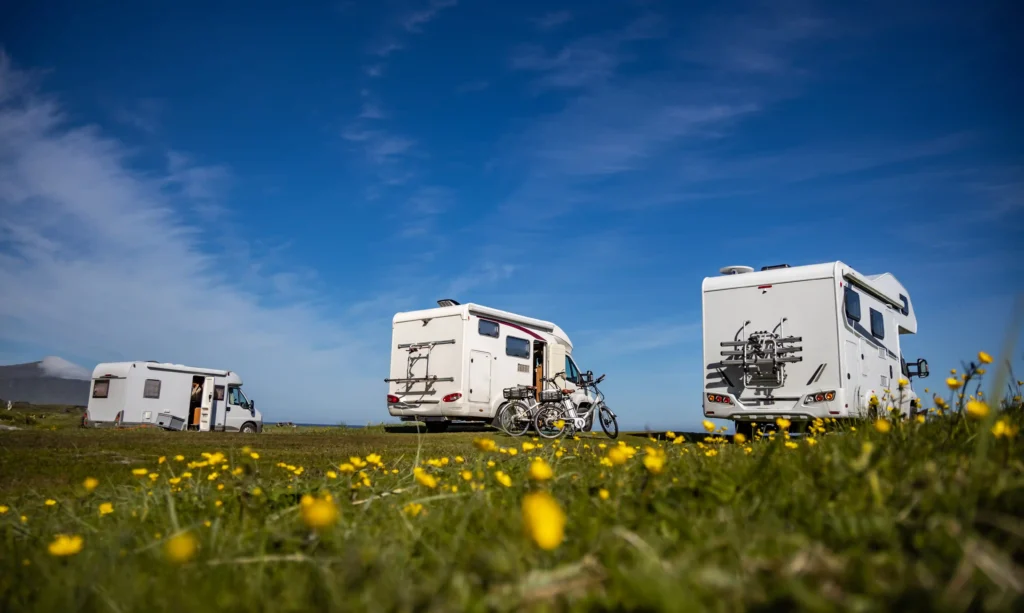
- Paradise Campground: Located near the Paradise Visitor Center, this campground offers tent and RV sites.
- Ohanapecosh Campground: Located in the Ohanapecosh Valley, this campground offers tent and RV sites, as well as cabins.
- Crystal Mountain Campground: Located outside the park, this campground offers tent and RV sites, as well as cabins.
- Moraine Park Campground: Located near the entrance to the park, this campground offers tent and RV sites.
Mount Rainier National Park Camping Reservations Click this link
Mount Rainier National Park Weather
Best Time to Visit: The best time to visit Mount Rainier National Park is typically from late spring to early fall when the weather is mild and the roads are open. However, the park can be crowded during peak season, so consider visiting during the shoulder seasons (spring or fall) for a less crowded experience. For latest update on “Weather in mount rainier national park” click this link
Suggested Activities for Different Seasons
Mount Rainier National Park Guide for Spring (April to June):
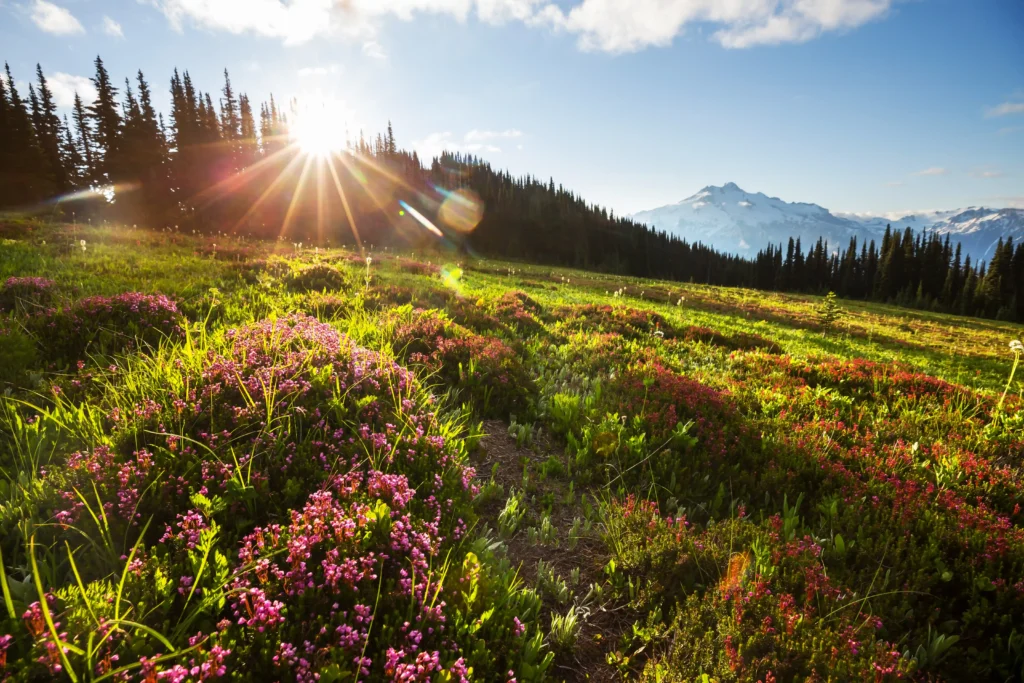
- Hiking: Enjoy the blooming flowers and lush greenery on various hiking trails.
- Bird Watching: Spring is prime time for migratory birds; grab binoculars and enjoy.
- Gardening: Spring is the perfect time to plant a garden with flowers, herbs, or vegetables.
Mount Rainier National Park Guide for Summer (July to September):
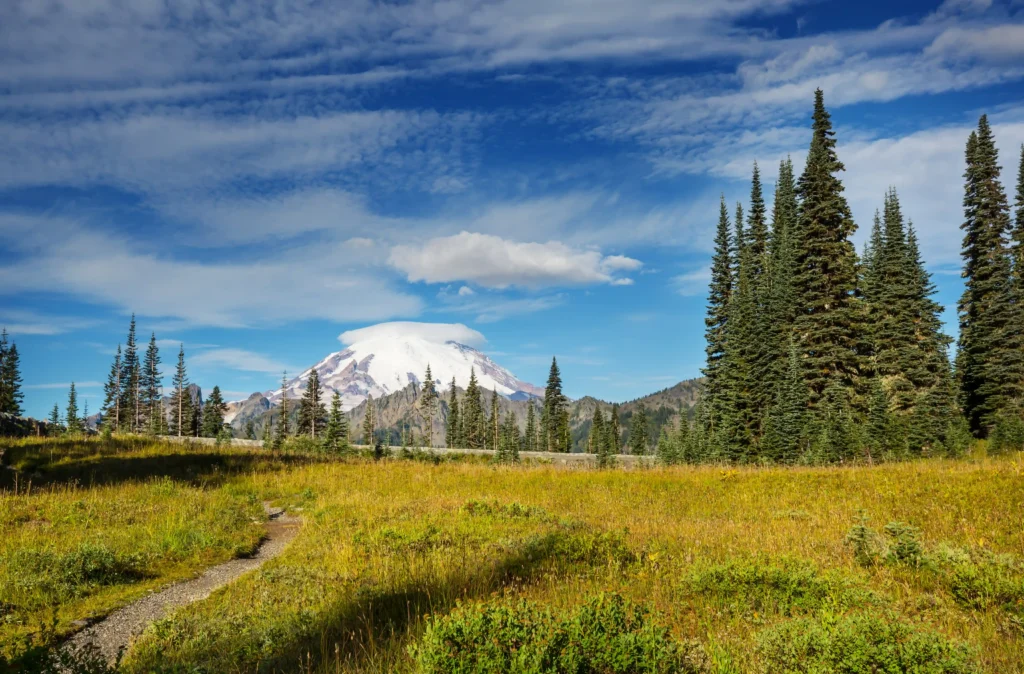
- Swimming: Head to a local pool, lake, or beach to cool off in the water.
- Camping: Enjoy the warm nights by camping out under the stars.
- Cycling: Explore your surroundings on a bike and take advantage of the longer daylight hours.
Mount Rainier National Park Guide for Fall (October to November):
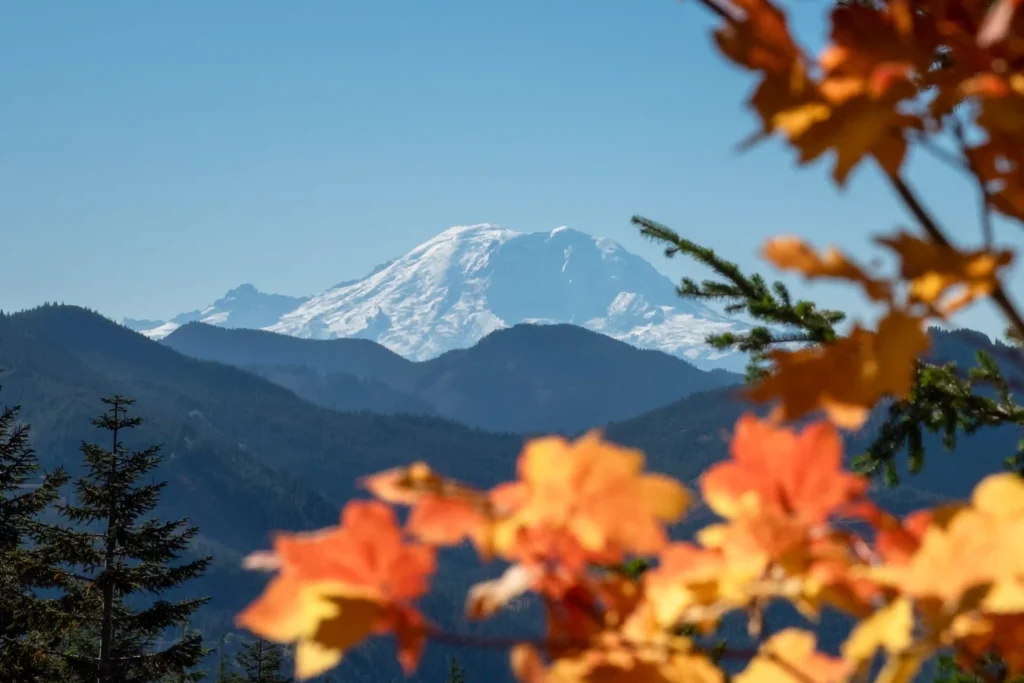
- Apple Picking: Visit an orchard to pick fresh apples and enjoy the crisp fall air.
- Leaf-Peeping: Go for a scenic drive or hike to witness the vibrant autumn foliage.
- Harvest Festivals: Attend local fall festivals featuring pumpkin patches, hayrides, and more.
Mount Rainier National Park Guide for Winter (December to March):
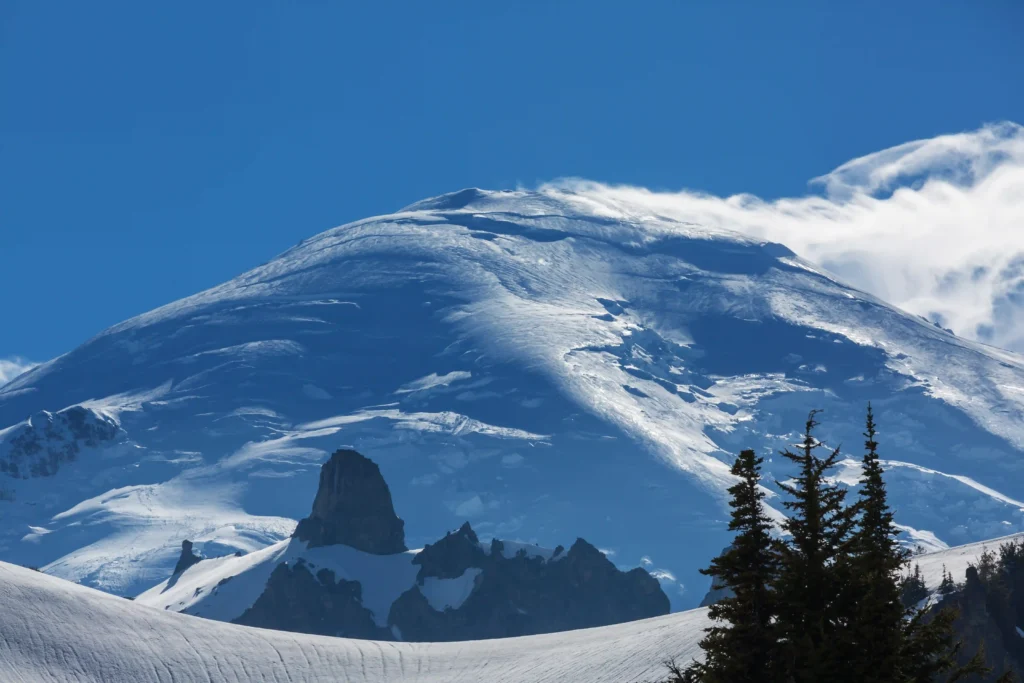
- Skiing/Snowboarding: Hit the slopes for some exciting winter sports.
- Ice Skating: Find an ice rink, whether indoors or a frozen pond, for some seasonal fun.
- Snowshoeing: Explore snowy trails and enjoy a quiet winter landscape.
Mount Rainier National Park Entrance Fee
- Private Vehicle: $30 for a 7-day pass
- Individual (on foot or bike): $15 for a 7-day pass
- Annual Pass: $55
- For “Mount Rainier National Park Reservations” click this link
Accommodation near Mount Rainier National Park Guide:
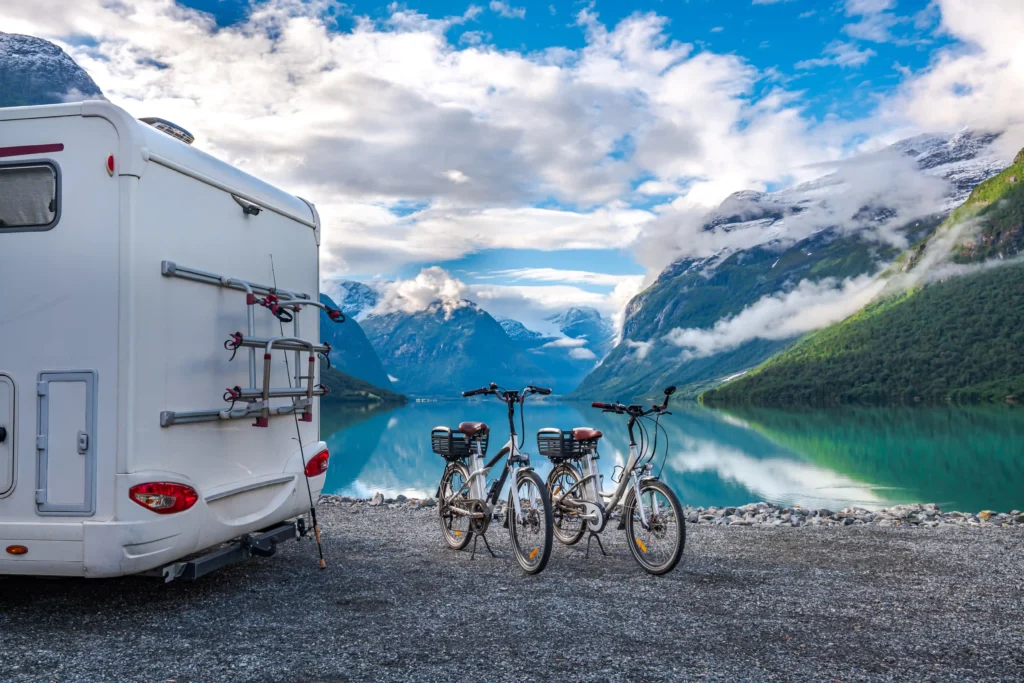
Hotels near Mount Rainier National Park Guide:
Inside the Park:
- Paradise Inn: A historic lodge with beautiful views.
- Cougar Rock Campground: Perfect for camping enthusiasts.
Nearby Towns:
- Ashford: Offers various lodges and cabins.
- Packwood: Known for its cozy inns and motels.
Safety Tips and Preparations for Visiting
A visit to Mount Rainier requires careful planning and preparation to ensure a safe and enjoyable experience. Here are some essential tips to keep in mind:
Mount Rainier National Park guide on Trail Conditions:
Check the weather forecast and trail conditions before heading out. The weather can change rapidly in the mountains, so be prepared for various conditions, including rain, snow, and fog.
Mount Rainier National Park Guide on Packing List and The Ten Essentials:
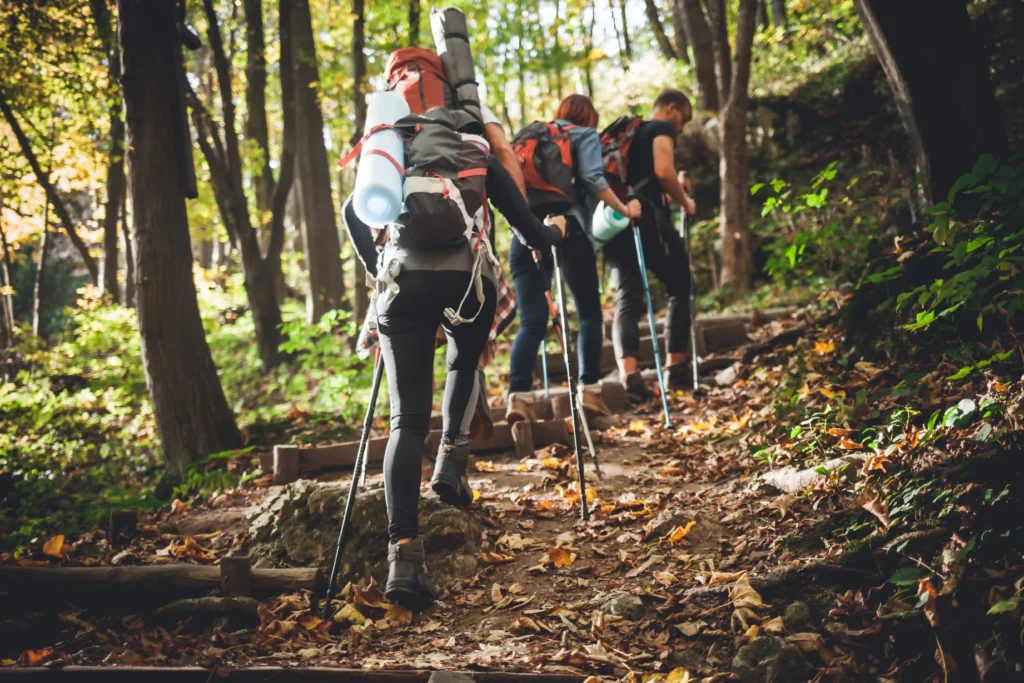
Pack the Ten Essentials for hiking, including navigation tools, sun protection, extra clothing, a first-aid kit, and plenty of food and water. Don’t forget a map of the park and a compass or GPS device.
Mount Rainier National Park Guide on Wildlife Safety:
Respect wildlife and maintain a safe distance. Store food securely to avoid attracting animals, and be aware of bear safety guidelines if you’re camping in bear country.
Top Tourist Attractions in Mount Rainier National Park Guide
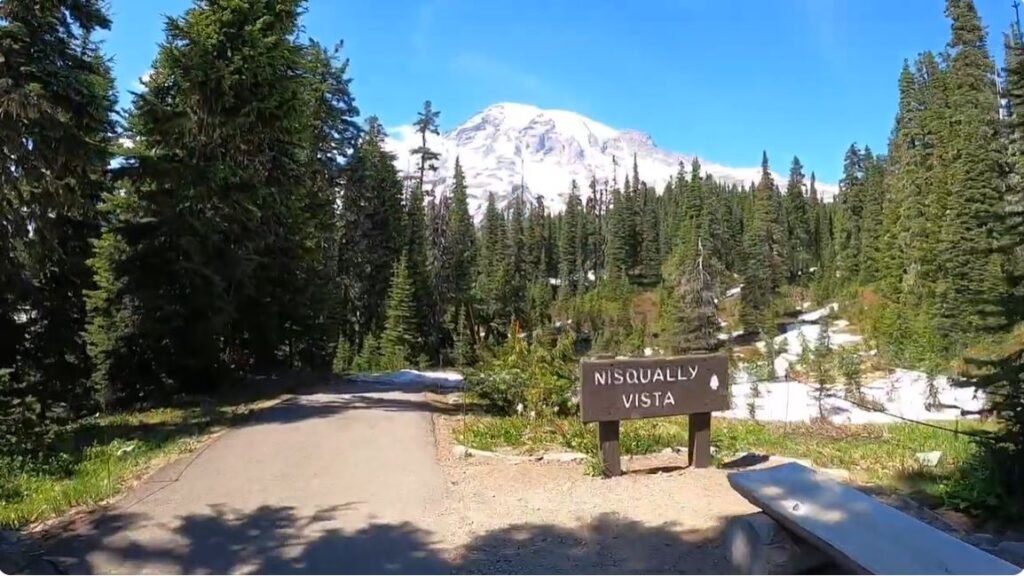
- Nisqually Glacier: One of the most accessible glaciers in the park, offering stunning views and opportunities for hiking.
- Carbon River Valley: A scenic valley with waterfalls, forests, and meadows.
- Ohanapecosh Falls: A beautiful waterfall located near the Ohanapecosh Campground.
- Christine Falls: A lesser-known waterfall with stunning views.
- Tahoma Park: A historic park with picnic areas, hiking trails, and a museum.
- Museum of the Mountain Rainier Forest: A museum that exhibits the natural history of the park.
- Jackson Visitor Center: A visitor center with exhibits on the park’s history, geology, and wildlife.
Conclusion:
Mount Rainier National Park is a true gem, offering a diverse range of outdoor adventures for hikers, nature enthusiasts, and local tourists. From its breathtaking landscapes and rich wildlife to its well-maintained trails and camping facilities, the park provides endless opportunities for exploration and enjoyment.
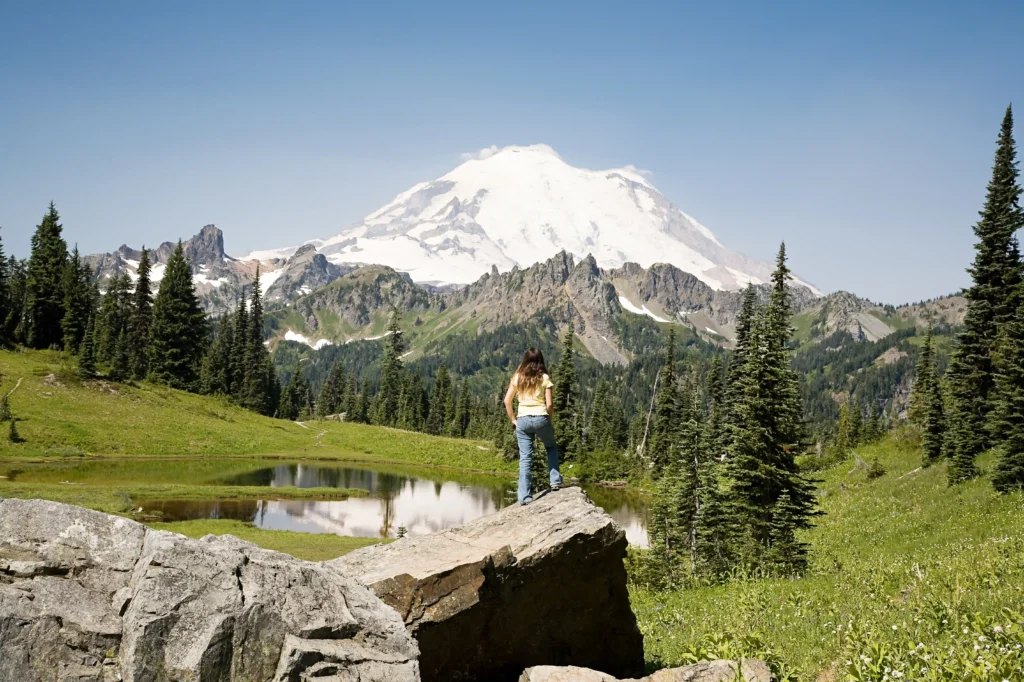
Pingback: The Ultimate Bucket List: 9 Best Hiking Trails in The USA to Conquer - Blogs by MHS